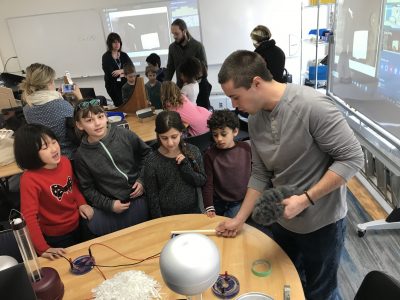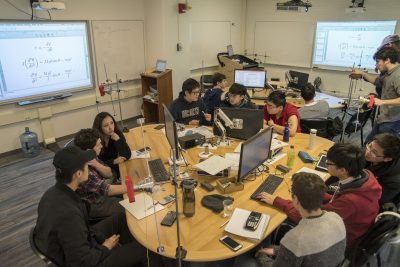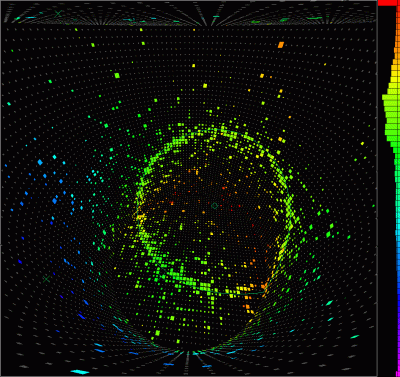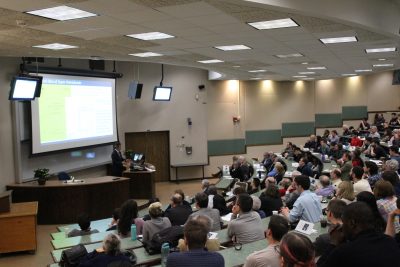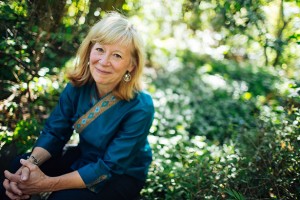Step into a fall 2018 class section of PHYS 1602: Fundamentals of Physics II, and you’ll find a scene that’s far from the large introductory science lectures common on most college campuses.
Anna Regan ’21 (CLAS) utilizes a whiteboard to try out
solutions during her group’s problem-solving tutorial.
(Bri Diaz/UConn Photo)
To start, the class of 30 students sits at several triangular workspaces, which today are covered with wires, coils, magnets, and power supplies that the students are using to demonstrate electromagnetic induction. At the start of class, the instructors provided a short lecture before the students set off on their own problem-solving tutorials.
Now, the instructors move from group to group, stopping to answer questions, as students shuttle back and forth to the whiteboards that line the classroom walls.
It’s a scene that’s about to become common in UConn physics courses, thanks to renovations to the Edward V. Gant Science Complex, according to Barrett Wells, professor and head of the Department of Physics.
“We’re rebuilding our classes from the ground up,” he says. “It’s the basis for what we’re going to spread across most of our introductory courses.”
The curricular redesign, says Wells, will replace the typical large-lecture format with smaller classes, utilizing five new studio-style physics learning laboratories to be added to the Gant Science Complex in 2019. These changes will promote active learning, collaborative problem solving, and faculty-student interaction, he says.
“This is a trend we’re seeing in our discipline,” Wells says. “Restricting class size to promote students actively participating during class has been documented to help them achieve and learn more across the board.”
Lecture Meets Lab
Traditional science courses, including those in physics, typically consist of three weekly lectures that hold 100 to 200 students, with once-per-week lab sections where students practice the concepts they learn in lecture.
But this setup poses challenges for professors and teaching assistants to cover the material at the same rate, often causing lecture and lab sections to fall out of synchrony, says Diego Valente, assistant professor in residence of physics and instructor of Fundamentals of Physics II.
In addition, many physics concepts are difficult to teach within the logistical setup of a lecture, and the instructors may have a difficult time knowing whether students comprehend the material, says Valente.
To combat these issues, the Department of Physics piloted redesigned versions of Fundamentals of Physics I and II, the introductory sequence for physics majors, in the spring and fall of 2018, respectively.
Course instructor and Ph.D. student Lukasz Kuna ’14
(CLAS), ’17 MS assists a group that includes Ian Segal-
Gould ’21 (CLAS), far right. (Bri Diaz/UConn Photo)
The new courses, which will use the physics learning laboratories, merge the lecture and lab sections into three 2-hour class periods per week that hold up to 54 students. Classes are led by the same professor and graduate students.
“[The studio classrooms] allow instructors to interact with students more frequently and discuss concepts with them in depth,” says Valente. “Previously, hands-on group work was limited to lab courses. Now, every single day in class there’s some kind of group activity where students solve problems.”
Lukasz Kuna ’14 (CLAS), ’17 MS, a physics Ph.D. student and teaching assistant for Fundamentals of Physics II, agrees.
“We can present a topic that’s somewhat difficult to understand, and then attack it from all angles,” he says. “It certainly should be the way physics is taught, because it prepares you for more difficult problem solving.”
A Learning Community
The studio learning model also increases the amount of time students spend working collaboratively, says Valente.
Ian Segal-Gould ’21 (CLAS), a physics and mathematics major enrolled in Fundamentals of Physics II, says that the class fosters the collaborative problem-solving that is expected of professional physicists.
“In lecture-based courses, people look at the professor,” he says. “They’re not talking to each other, they’re not solving the problem—they’re looking at somebody else solve the problem. In the real world, physicists work together, so I think the interactive component to this course is on the right track.”
Physics major Megan Sturm ’21 (CLAS) says that working in small groups helps build camaraderie and exposes her to new ideas.
“I know at least half of the class, and it’s way easier to learn that way,” she says. “Someone else will ask a question or say something during the lab that I wouldn’t have even thought about.”
Sturm also says that she enjoys the frequency of interaction with the instructors, noting that Valente circulates through the class, asks students specific questions, and engages in hands-on work with them.
Physics major Megan Sturm ’21 (CLAS) says that working
in small groups helps build camaraderie and exposes her to
new ideas. (Bri Diaz/UConn Photo)
“He’s way more approachable, so when I’m having trouble with things, I don’t have a problem going to office hours,” she says.
Kuna, who has taught for three years in the Department, says that the faculty-student interaction helps him better gauge how students are learning the material.
“Traditionally, if you’re teaching in a large lecture, you somewhat lose the students when they go to lab,” he says. “Here, you get to see where your class stands.”
New Opportunities
With a target completion date for phase one renovations set for fall of 2019, the Department is gearing up to redesign other introductory courses, including Physics for Engineers and Physics with Calculus, a general education sequence taken by many pre-med students.
“This is important because we offer courses to majors across the University, and we’re teaching more students each year,” Wells says.
“Our goal is to develop not just comprehension of physical concepts, but also transferable skills–things like communication through group work and computer programming, which students can use in their professional lives,” adds Valente.
He says that these investments in teaching and infrastructure give UConn an advantage in addressing instructional issues common at institutions across the United States.
“This is a really large-scale venture we are doing, something a lot of comparable institutions aren’t able to do,” Valente says. “It shows that UConn is making a big commitment to physics education.”
By: Bri Diaz, College of Liberal Arts and Sciences
This article was originally published in the UConn CLAS Newswletter, November 28 issue
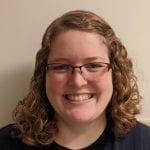
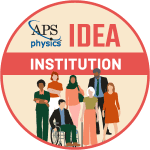
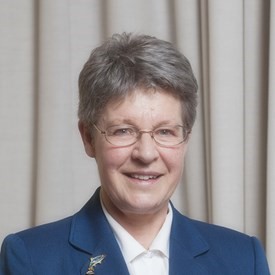 (pictured at left) is world-famous for her discovery of pulsars in 1967. Pulsars are a special type of neutron star, the rotating dense remnant of a massive star. Pulsars have highly magnetic surfaces and emit a beam of electromagnetic radiation along their poles. This beam of light moves into and out of our line-of-sight at quick, constant intervals, appearing as a regular “pulse” of light.
(pictured at left) is world-famous for her discovery of pulsars in 1967. Pulsars are a special type of neutron star, the rotating dense remnant of a massive star. Pulsars have highly magnetic surfaces and emit a beam of electromagnetic radiation along their poles. This beam of light moves into and out of our line-of-sight at quick, constant intervals, appearing as a regular “pulse” of light.